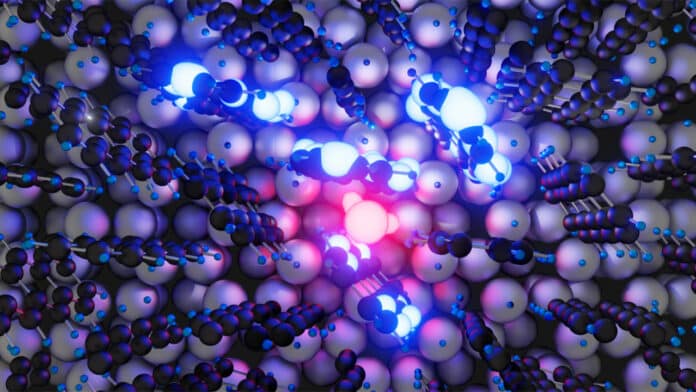Physicists at Paderborn University have developed a new design for significantly more efficient solar cells than previously available.
They used computer simulations to come up with this design and found that a thin layer of organic material called tetracene can significantly increase the efficiency of solar cells.
“The annual energy of solar radiation on Earth amounts to over one trillion kilowatt-hours and thus exceeds the global energy demand by more than 5000 times. Photovoltaics, i.e., the generation of electricity from sunlight, therefore offers a large and still largely untapped potential for the supply of clean and renewable energy. Silicon solar cells used for this purpose currently dominate the market but have efficiency limits,” explains Prof Dr Wolf Gero Schmidt, physicist and Dean of the Faculty of Natural Sciences at Paderborn University.
This is because some of the energy from short-wave radiation is not converted into electricity but into unwanted heat.
According to Schmidt, adding an organic layer, such as tetracene, to a silicon solar cell can increase its efficiency. The organic layer absorbs short-wave light and generates high-energy electronic excitations called excitons. These excitons then decay into two low-energy excitations in the tetracene layer.
If these excitations can be successfully transferred to the silicon solar cell, they can be converted into electricity more efficiently, resulting in a higher yield of usable energy.
A team led by Schmidt is investigating the excitation transfer of tetracene into silicon using complex computer simulations at the Paderborn Center for Parallel Computing (PC2), the university’s high-performance computing center.
Their research has made a significant breakthrough, showing that unsaturated chemical bonds at the interface between the tetracene film and the solar cell can dramatically accelerate the exciton transfer. These defects occur when hydrogen is desorbed, leading to electronic interface states with fluctuating energy that transport the electronic excitations from the tetracene into the silicon.
Such defects in solar cells are actually linked to energy losses. According to researchers, the defects are crucial for the quick transfer of energy in the case of the silicon tetracene interface.
“The results of our computer simulations are truly surprising. They also provide precise indications for the design of a new type of solar cell with significantly increased efficiency,” the physicist states.
Journal reference:
- Marvin Krenz, Uwe Gerstmann, and Wolf Gero Schmidt. Defect-Assisted Exciton Transfer across the Tetracene-Si(111):H Interface. Physical Review Letters, 2024; DOI: 10.1103/PhysRevLett.132.076201
